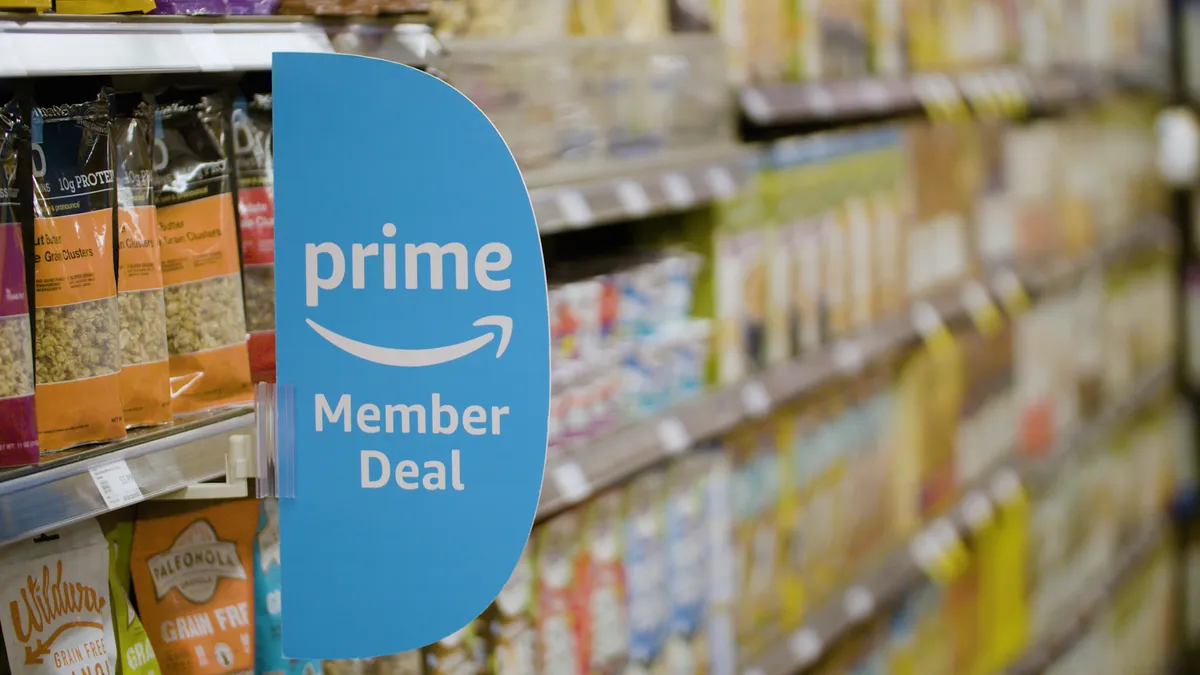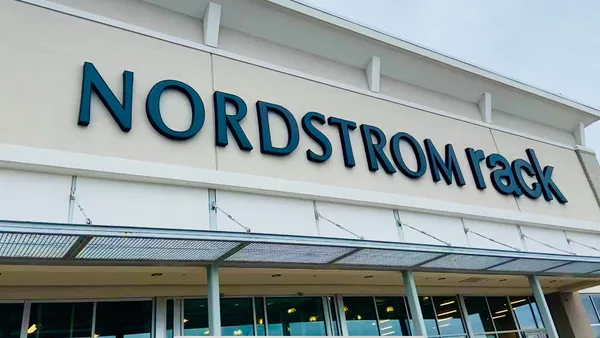Dive Brief:
- Along with Prime Day's status as a massive online sales event, this year Amazon's self-proclaimed holiday also drove store visits to Amazon's Whole Foods as well as to physical stores of the company's competitors.
- According to foot traffic analytics firm Placer.ai, visits to Whole Foods stores on Saturday, July 13, were 20.3% above the baseline for 2019 and up 26.8% on July 14, while the Monday of Prime Day had the fourth-most weekday visits of the year so far.
- Meanwhile, in-store traffic at Walmart was up 25.7% above its baseline on Friday, July 12, up 37.5% on July 13, and up 26.1% on July 14. At Target, traffic was up Monday (3%), Tuesday (4.4%) and Wednesday (4.9%) of Prime Week as well. Finally, Best Buy's traffic spiked 6.5% over its baseline that Monday and 4.6% on Tuesday.
Dive Insight:
Prime Day's benefits seem to be getting broader, both across the retail world and across the businesses of individual retailers. Ethan Chernofsky, Placer.ai marketing vice president, said in a blog post of Whole Foods' traffic spikes that "this is a crucial win for Prime Day as it not only succeeded in driving visits, but in pushing them during 'off peak' times."
The spoils, as with online traffic, went beyond Amazon. Chernofsky said that Target's foot traffic gains, coming as they did against typical midweek dips, represented "huge gains on the norm." For its part, Target was playing to its strengths for Prime Day, emphasizing ahead of the event its lack of membership to get free shipping and pushing its omnichannel services such as in-store pickup.
Spikes at Walmart, Target and Best Buy also show just how tightly bound e-commerce and store operations are becoming, as store fulfillment and pick-up become crucial competitive advantages — and sales and profit generators — for Walmart and Target as they square off with Amazon.
Online, Amazon's sales on July 15 and 16 surpassed those of last year's Black Friday and Cyber Monday combined, as Prime members bought more than 175 million items, according to the company. At the same time, sales at large retailers on the first day of Prime Day rose 64% compared to an average Monday, up from last year's 54%, according to Adobe Analytics.
In just four years, Prime Day has gone from initial launch by Amazon to an industry-wide summer sales event few can afford to ignore.













